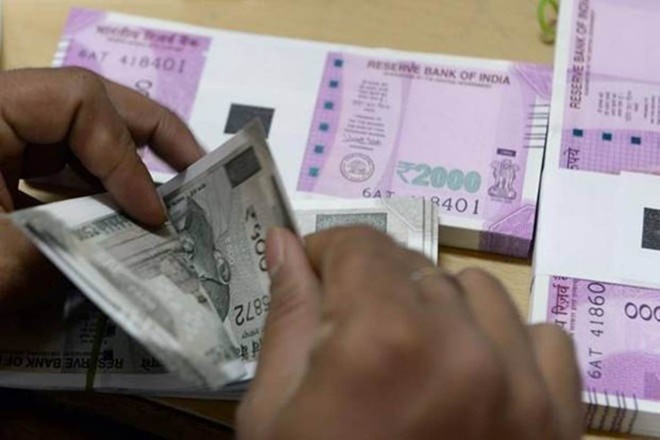Continuing forex outflows from the stock and bond markets and a strengthening dollar sent the rupee to new lifetime lows on Thursday. The Indian currency closed at 74.98 against the greenback, 76 paise lower than Wednesday’s close. During the day, it fell to levels of 75.31 against the dollar, Bloomberg data showed.
Foreign portfolio investors (FPI) have now sold close to $10 billion worth of stocks and bonds in March so far in what is believed to be the biggest ever monthly outflow. The dollar index, which tracks the strength of the US dollar against a basket of US trade partners’ currencies, rose to a three-year high of 102.25 on Thursday.
Reserve Bank of India (RBI) has said it would do dollar sell/buy swaps worth $4 billion. The central bank has reserves worth over $487 billion. Market participants also believe the RBI intervened in the forex market at around the 74.96 levels on Thursday. “FPI outflows, position unwinding, and global risk-off have put pressure on the rupee. For now, the RBI has plenty of firepower to slow down rupee depreciation. Till recently, our forex reserves were at record highs,” said Ananth Narayan, professor-finance, SPJIMR.
MV Srinivasan, vice-president at Mecklai Financial Services, said investors were chasing safe haven currencies. “There is a rush to buy dollars as the crisis is worsening around the world and other assets are being offloaded. Investors are selling other assets to deleverage. Unless the RBI intervenes meaningfully, the volatility in the forex market could continue,” Srinivasan said.
At the same time, the NDF (non-deliverable forwards) market also witnessed a lot of volatility, dealers said. For instance, the difference between the onshore rupee forwards and the NDF was as high as 70 paise during early trade, according to dealers. NDF markets enable trading of the non-convertible currency, like a rupee, outside the influence of the domestic authorities.
The weakening of the rupee comes at a time when global growth and trade are slowing and a weaker rupee will give India’s exporters only a small advantage. Narayan explained that with borders closing and activity reducing, global trade will likely contract sharply in the short run and in this context, a weaker rupee will hardly help the export cause immediately. “However, over the medium run, this weakening of the rupee will help correct real effective exchange rate (REER) terms for a while now and depreciation could help our terms of trade. Over a six-month period, the rupee has been the second-most depreciating currency within the basket of currencies of China, Indonesia, Malaysia, Vietnam and Bangladesh.


